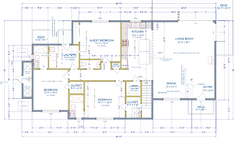
Hello. I have a new modern, south-facing home being built in S.E. TN on a slab. It has passive solar design with windows on the south face and a roof overhang that lets winter sun into the home. It is a shed style roof that reaches 16 feet at its highest. The stove I'd like to put in will top vent through the roof at about 12-13 feet. I understand heating square footage when the space is generally open, but after searching, I still have difficulty understanding the amount of heat I can expect to share with less open spaces. Furthermore, should I take into account my ceiling height in picking a stove size?
The main level is 1800 sqft. There is an upstairs, but it has its own heat source.
We will have central heat, but I'd instead love to run wood all winter if it were comfortable. I plan on installing a large ceiling fan in the living room with very low speed capable of moving more air and, if it would help, also running our hvac fan. Is it wiser to get a small stove for the living room, close the bedrooms and buy space heaters or would you buy one for the entire 1800 ft^2?
Could I heat the entire level without overheating the living room? My family works and schools at home, generally spending our time together in the main spaces, so the comfort there is most important.
Basically, what square footage would you use to determine which stove fits my particular needs?
I attached the floorplan which includes the proposed location of the stove. Also, if any guidance on brands and models occurs to you, I'd love to hear the suggestions.
Many thank you's in advance.

